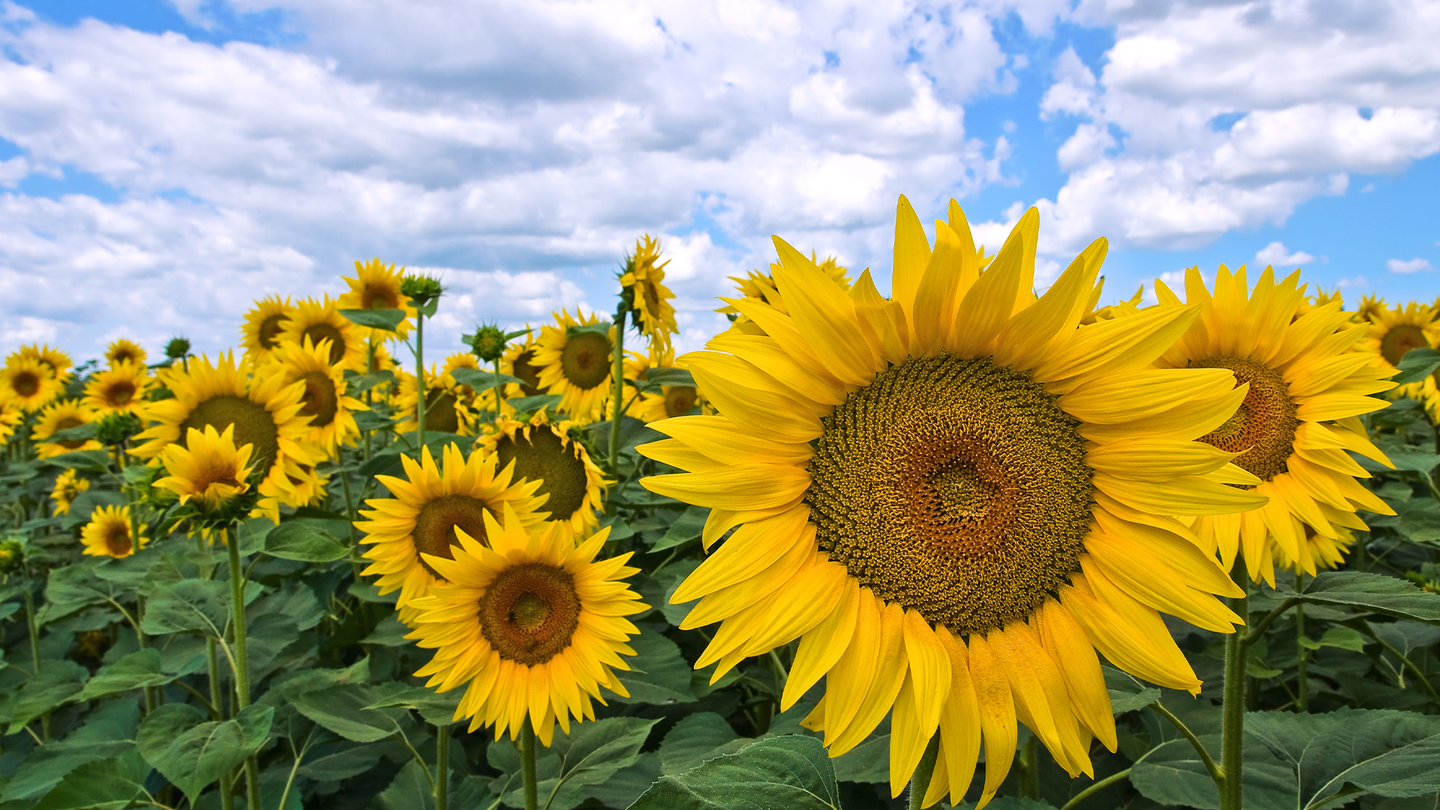We still don’t fully know how sunflowers turn toward the sun
Their signature move appears to be different than a better known light response in plants.

As Earth rotates and the sun moves across the sky from east to west, sunflowers turn their brilliant yellow faces to follow it. The mechanics behind this process, called heliotropism, is still a mystery to plant biologists. A study published October 31 in the journal PLOS Biology likely rules out that a sunflower’s ability to follow the sun is related to a more well-known response to light that all plants follow. Sunflowers probably rely on several more complicated processes to track the sun instead.
[Related: The mathematical theory that connects swimming sperm, zebra stripes, and sunflower seeds.]
Since plants are rooted in one place, they can’t move if light they need to make food is blocked by a neighbor or if they are in a shady spot. They rely on growth or elongation to move towards the light and there are several molecular systems behind this. The best-known response is the phototropic response. Proteins called phototropins sense blue light falling unevenly on a seedling and the plant’s growth hormones are redistributed. This ultimately causes it to bend towards the light.
Plant biologists have long assumed that the sunflower’s ability to follow the sun would be based on the same mechanism as phototropism. To track the sun, the sunflower’s head leans slightly more on the eastern side of its stem. This positions their head towards the direction where the sun rises. It then shifts west as the sun moves across the sky. An earlier study showed that sunflowers have an internal circadian clock that anticipates the sunrise and coordinates the opening of its florets with the time when pollinating insects arrive in the morning.
To investigate whether this sun-tracking ability is a shru, the team behind the new study used sunflowers grown in a laboratory and others grown outdoors in sunlight. They looked to see which genes were switched on when both sets of plants were exposed to their light sources. The indoor sunflowers grew straight towards their blue light source in the lab and activated the genes associated with phototropin. The flowers that were grown outdoors and swung their heads with the sun had a different pattern of gene expression. These sunflowers also didn’t have any apparent differences in phototropin molecules between one side of the stem and another.
“We’ve been continually surprised by what we’ve found as we study how sunflowers follow the sun each day,” study co-author and University of California, Davis plant biologist Stacey Harmer said in a statement. “In this paper, we report that they use different molecular pathways to initiate and maintain tracking movements, and that the photoreceptors best known for causing plant bending seem to play a minor role in this remarkable process.”
The team also blocked blue, ultraviolet, red, or far-red light with shade boxes. The blinders didn’t have any effect on the heliotropism response. According to the team, this indicates that there are probably multiple pathways responding to different wavelengths of light to achieve the same goal of following the sun.
[Related: Dying plants are ‘screaming’ at you.]
The genes involved in heliotropism have not yet been identified. “We seem to have ruled out the phototropin pathway, but we did not find a clear smoking gun,” Harmer said.
When the sunflowers grown in the lab were moved outside, they began to track the sun on their first day. They initially showed a huge burst of gene expression on the shaded side of the plant that did not happen on the following days. Harmer said this suggests some kind of “rewiring” is going on in the plant.
In addition to weeding out some of the process behind how sunflowers track the sun, this work also has relevance for designing future experiments with plants to understand their mechanisms.
“Things that you define in a controlled environment like a growth chamber may not work out in the real world,” Harmer said.
